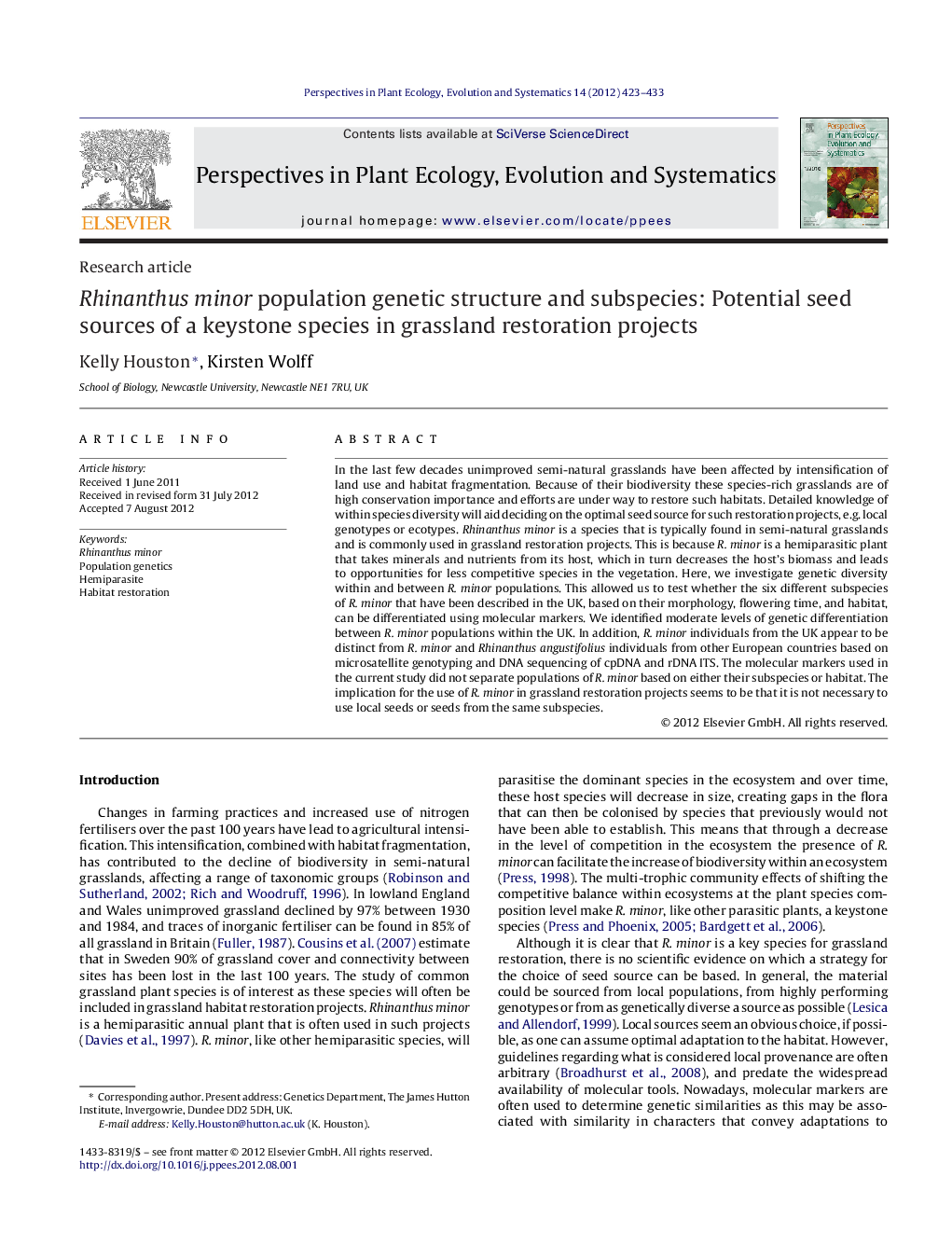| Article ID | Journal | Published Year | Pages | File Type |
|---|---|---|---|---|
| 4401001 | Perspectives in Plant Ecology, Evolution and Systematics | 2012 | 11 Pages |
In the last few decades unimproved semi-natural grasslands have been affected by intensification of land use and habitat fragmentation. Because of their biodiversity these species-rich grasslands are of high conservation importance and efforts are under way to restore such habitats. Detailed knowledge of within species diversity will aid deciding on the optimal seed source for such restoration projects, e.g. local genotypes or ecotypes. Rhinanthus minor is a species that is typically found in semi-natural grasslands and is commonly used in grassland restoration projects. This is because R. minor is a hemiparasitic plant that takes minerals and nutrients from its host, which in turn decreases the host's biomass and leads to opportunities for less competitive species in the vegetation. Here, we investigate genetic diversity within and between R. minor populations. This allowed us to test whether the six different subspecies of R. minor that have been described in the UK, based on their morphology, flowering time, and habitat, can be differentiated using molecular markers. We identified moderate levels of genetic differentiation between R. minor populations within the UK. In addition, R. minor individuals from the UK appear to be distinct from R. minor and Rhinanthus angustifolius individuals from other European countries based on microsatellite genotyping and DNA sequencing of cpDNA and rDNA ITS. The molecular markers used in the current study did not separate populations of R. minor based on either their subspecies or habitat. The implication for the use of R. minor in grassland restoration projects seems to be that it is not necessary to use local seeds or seeds from the same subspecies.
